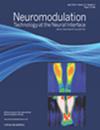Tonic and Event-Related Phasic Transcutaneous Auricular Vagus Nerve Stimulation Alters Pupil Responses in the Change-Detection Task
IF 3.2
3区 医学
Q2 CLINICAL NEUROLOGY
引用次数: 0
Abstract
Background
Transcutaneous auricular vagus nerve stimulation (taVNS) has emerged as a potential modulator of cognitive behavior by activating the locus ceruleus-noradrenaline (LC-NA) system. Previous studies explored both phasic and tonic taVNS by investigating their impact on LC-NA markers such as pupil dilation and heart rate variability (HRV).
Objective
Inconsistencies persist in the identification of reliable markers for assessing the effects of taVNS on noradrenergic activity. Furthermore, it remains unclear whether the effects of taVNS extend beyond pure vagal nerve responses, particularly in specific cognitive domains such as working memory. In the present study, we investigated the effects of taVNS on working memory capacity and LC-NA markers using a change-detection task.
Materials and Methods
Twenty-two healthy, right-handed university students participated in a sham-controlled, randomized cross-over experiment with four sessions. We applied two types of phasic and event-related stimulation (Pre-event and Event-synchronous), tonic stimulation (Pre-task), and sham stimulation across different sessions. Pupil size and electrocardiogram data were recorded during the tasks.
Results
taVNS did not significantly modulate behavioral performance on the change-detection task, specifically working memory capacity. However, both tonic and event-related phasic taVNS significantly influenced the pupillary response during the task. In addition, the Pre-task condition of the taVNS affected the low-frequency parameter of HRV.
Conclusions
Our findings suggest that tonic and event-related phasic taVNS may modulate noradrenergic activity, as evidenced by pupil responses and HRV changes during the change-detection task. This study provides new evidence regarding the impact of taVNS on cognitive tasks, thus supporting the development of noninvasive neuromodulation interventions.
紧张性和事件相关的相位经皮耳迷走神经刺激改变了变化检测任务中的瞳孔反应。
背景:经皮耳迷走神经刺激(taVNS)已成为激活蓝斑-去甲肾上腺素(LC-NA)系统的认知行为的潜在调节剂。先前的研究通过研究相性和强直性taVNS对LC-NA标志物(如瞳孔扩张和心率变异性(HRV))的影响来探索它们。目的:在评估taVNS对去甲肾上腺素能活性影响的可靠标记物的鉴定上仍然存在不一致性。此外,尚不清楚taVNS的作用是否超出了纯粹的迷走神经反应,特别是在特定的认知领域,如工作记忆。在本研究中,我们通过变化检测任务研究了taVNS对工作记忆容量和LC-NA标记的影响。材料和方法:22名健康的右撇子大学生参加了一项为期4期的随机交叉实验。我们在不同的会话中应用了两种类型的阶段性和事件相关刺激(事件前和事件同步)、紧张性刺激(任务前)和假刺激。在任务期间记录瞳孔大小和心电图数据。结果:taVNS对变化检测任务的行为表现,特别是工作记忆容量没有显著调节作用。然而,在任务过程中,强直性和事件相关的相性taVNS均显著影响瞳孔反应。此外,taVNS的任务前条件影响HRV的低频参数。结论:我们的研究结果表明,强张性和事件相关的阶段性taVNS可能调节去甲肾上腺素能活动,这可以通过变化检测任务中的瞳孔反应和HRV变化来证明。本研究为taVNS对认知任务的影响提供了新的证据,从而支持了无创神经调节干预措施的发展。
本文章由计算机程序翻译,如有差异,请以英文原文为准。
求助全文
约1分钟内获得全文
求助全文
来源期刊

Neuromodulation
医学-临床神经学
CiteScore
6.40
自引率
3.60%
发文量
978
审稿时长
54 days
期刊介绍:
Neuromodulation: Technology at the Neural Interface is the preeminent journal in the area of neuromodulation, providing our readership with the state of the art clinical, translational, and basic science research in the field. For clinicians, engineers, scientists and members of the biotechnology industry alike, Neuromodulation provides timely and rigorously peer-reviewed articles on the technology, science, and clinical application of devices that interface with the nervous system to treat disease and improve function.
 求助内容:
求助内容: 应助结果提醒方式:
应助结果提醒方式:


